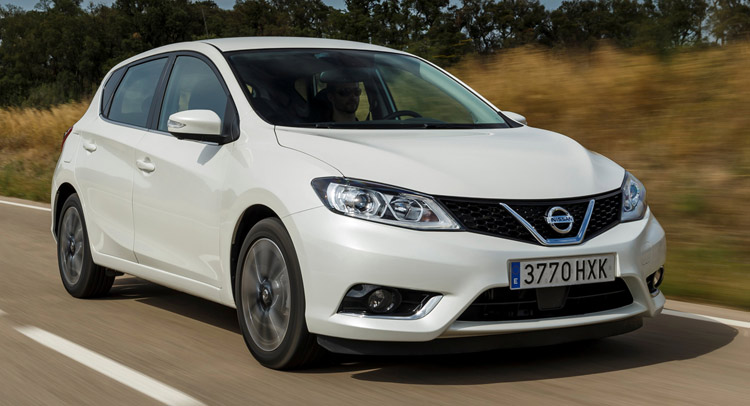Nissan wants to make sure no square centimeter of its all-new Pulsar goes unnoticed, so the Japanese automaker released a photo gallery with… 349 pics. But don’t worry, we’ll forgive you if you haven’t got the patience to go through all of them.
The Pulsar is Nissan’s shot at the European C-segment dominated by the VW Golf. So what are the Pulsar’s assets? Well, Nissan says it has the greatest wheelbase (2,700mm/106.3in), rear leg space (692mm/27.2in) and trunk capacity (385 liters/13.6 cubic-feet) in the segment. With the rear seats folded flat, boot volume increases to 1,395 liters (49.2 cu-ft).
Nissan says the Pulsar also boasts “exceptionally high equipment levels”, in all three of its trim grades – Visia, Acenta and Tekna. All models are fitted as standard with air conditioning, five-inch Advanced Drive-Assist Display and electric windows all-round. Tyre Pressure Monitoring System, six airbags and Stop & Start system are also all fitted as standard across the range.
The new Pulsar also introduces a number of advanced technologies, such as Moving Object Detection, Nissan Safety Shield system, Around View Monitor, Active Trace Control, Forward Emergency Braking and the latest-generation NissanConnect infotainment system.
At launch, the Pulsar is offered with two turbocharged engines, a 1.2-liter DIG-T petrol unit and a 1.5-liter dCi diesel, both fitted as standard with Idle Stop-Start. The former produces 115PS (114hp) and 190 Nm (140 lb-ft) of torque, while the diesel generates 110PS (109hp) and 260 Nm (192 lb-ft) of torque. In early 2015 Nissan will also offer a 190PS (187hp) 1.6-liter turbocharged petrol engine.
Mated to a six-speed manual transmission, the 1.2-liter engine averages 5 l/100 km (47 mpg US) and 117 grams of CO2 per kilometer, helping the Pulsar sprint from 0 to 100 km/h in 10.7 seconds. The diesel averages just 3.6 l/100 km (65.3 mpg US) and 94 g of CO2 per kilometer.
The Nissan Pulsar is produced at the carmaker’s Barcelona plant in Spain.
PHOTO GALLERY
































































































































































































































































































































































